College Sports
A lower
As recently as 2011, the professional soccer landscape was in relative stasis. On the men’s side, Major League Soccer (MLS) had only recently stabilized and begun its growth, with fewer than 20 active clubs until 2015. The men’s lower divisions had splintered into two leagues: the North American Soccer League (NASL) occupied the second-division rung, […]


As recently as 2011, the professional soccer landscape was in relative stasis.
On the men’s side, Major League Soccer (MLS) had only recently stabilized and begun its growth, with fewer than 20 active clubs until 2015. The men’s lower divisions had splintered into two leagues: the North American Soccer League (NASL) occupied the second-division rung, and the United Soccer League (USL), then branded as USL Pro, kicked off as a third division. On the women’s side, the first-division Women’s Professional Soccer (WPS) played its final season, two years before the National Women’s Soccer League’s (NWSL) debut.
Advertisement
The four leagues had a combined 44 teams, only six of which were women’s clubs.
In 2025, there are 119 professional clubs, with 22 women’s teams between the two Division I leagues, NWSL and the USL Super League. More are expected to join next year, including the dawn of professional lower-league women’s soccer, which has been lacking due in large part to historical underfunding. Despite the eye-popping valuations of clubs today, the NWSL — the third attempt at professional women’s soccer in the U.S. and the one that has been around the longest — has only recently reached its point of acceleration with the newest expansion team, Denver, paying $110 million to join.
On Friday, CBS Sports reported that the NWSL sent an application to U.S. Soccer to launch a second-division league. In its petition to the federation, NWSL commissioner Jessica Berman said launching this league would be “essential for (its) development and sustainability,” citing player and staff development.

A letter from NWSL commissioner Jessica Berman to U.S. Soccer outlined the league’s Division II request. (Russell Lansford / Imagn Images)
The proposed league resembles a reserve league rather than a second tier; Berman’s letter likened it to Major League Baseball’s minor leagues. Affiliates are common in sports as a way of developing players and providing another path to pros for those not quite ready for primetime. It’s also an avenue for markets that wouldn’t be considered for the top division to get in on the fun, all while helping players and staff bolster their resumes for upward mobility.
But is the scale of increase answering a need, or causing a convoluted shape that looks less like a pyramid and, instead, becoming something far more amorphous?
In a statement shared with The Athletic after the news of its request for Division II sanctioning, the NWSL added an unmissable second factor: “The demand for professional soccer has never been higher.”
Long touted as the “sport of the future,” the organizers of professional soccer have viewed the past decade (and the half-decade to come) as their optimal growth window. The men’s World Cup will come stateside next summer; the 2028 Olympics in Los Angeles and the 2031 Women’s World Cup extend the window of major global tournaments at home, fueling investors’ interest in launching clubs, leagues and events like The Soccer Tournament.
Advertisement
What the NWSL has proposed is a minor league, but there’s room for argument that the space needs a proper lower division. NWSL leaving the door open for unaffiliated teams to join in the future is evidence of that. However, wanting to launch lower-division soccer leagues is one thing; curating them to endure with genuine stability is a far more difficult venture.
When the USL announced its intention to launch a professional women’s league after previously launching the amateur W-League, it seemed like a clear solution to launching lower-division women’s soccer. The USL had established itself in the men’s landscape, even recognizing the first player’s union for lower-league soccer players.
Instead, the USL launched the Super League with first-division sanctioning requirements, citing a desire to operate at the highest baseline standard possible. It also complicated how to contextualize its launch: was this a rival league for the NWSL or a developmental platform independent from it?

USL launched the Super League in 2024 as a Division I league. (USL Super League)
The USL Super League is nearing the end of its inaugural regular season, with the playoff semifinals on June 7 and a final on June 14. The Carolina Ascent has been the clear initial power, topping the league table as well as the attendance rankings with an average home draw of 3,859, including a high mark of 10,553 for the inaugural match.
But leagues aren’t cheap. Nor are the individual clubs.
Scouring the USL’s publicly available Franchise Disclosure Documents, Colton Coreschi reported on the Super League clubs’ first-year financial expenditure for Backheeled. Per his reporting, the expansion fee to join the Super League stands at $10 million — five times the fee paid by Angel City, the San Diego Wave and the Utah Royals to join NWSL, per Sportico. Player expenses (including salaries, insurance and housing) range from $732,000 to $1.8 million annually per club. Coaches add another $175,000 to $350,000 onto the ledger, while facilities are even more expensive to secure: $725,000 to $2.3 million.
Advertisement
Tack on travel and off-field costs like front-office staff, broadcasts, supplies and annual dues, and the range of estimated operational expenses per year goes from $3.4 million to $7.7 million on top of the one-time $10 million expansion fee. It’s an expensive pursuit to execute well, and one that isn’t for the faint of heart.
While the women’s soccer pyramid is still burgeoning, the men’s leagues provide a cautionary tale.
After the (second) NASL ceased operation in 2017, the USL on the men’s side had brief but total command over the second and third-division levels. Its flagship rebranded as the USL Championship in 2019, the same year it launched a new circuit, USL League One, to fill the void left in the third-division tier.
Around the same time, U.S. Soccer also granted third-division sanctioning to the National Independent Soccer Association (NISA). That league never really gained a foothold with frequent backroom reorganization, its stable of clubs varying greatly each season and the COVID-19 pandemic.
Nevertheless, its launch sent a message: U.S. Soccer would grant (non-provisional) sanctioning within the same tier of its pyramid to multiple leagues, so long as their proposal was sound. MLS soon followed, launching Next Pro as a Division III league to house its affiliate (not reserve, per league guidance) clubs in 2022.
The disjointed competition has left a myriad of Division III men’s leagues looking for meaning. While USL League One is in its seventh season and expanding, NISA is on a partial hiatus and Next Pro is largely an MLS developmental league with only a small portion of its clubs being independent. Some MLS teams still send their top prospects who need more training on loans to USL clubs in the Championship and League One.
Somehow, this doesn’t quite feel like the utopian ideal that the “sport of the future” promised. Still, there’s a promise of future payoff, especially in women’s soccer.
Advertisement
But dedicated support from fans requires more than proximity and abundance. It requires operational stability at the club and league levels: enough time for memories, often emotional, to occur. There has yet to be an investment or strategy in the lower-division landscape to produce despite recent efforts.
NWSL’s Division II proposal is up against WPSL Pro, another league that announced its intentions to apply for Division II status last week. For those keeping track, that’s two Division I leagues, two Division II, no Division III and multiple amateur offerings.
(As a related aside: if the NCAA extends the college soccer season, it could leave well over a hundred amateur soccer clubs that play in the summer, in leagues like the USL W-League and modern WPSL, needing to decide if they can scale up and go professional or if they’ll struggle to contend.)

WPSL Pro shared a design of where they think they fit in the pyramid before NWSL’s Division II bid became public. (WPSL Pro)
It’s a conundrum of U.S. Soccer’s own creation by opening the landscape like a marketplace instead of working to ensure a coherent structure — a far more Darwinistic method of curation than the launches of MLS and the NWSL. It leaves the act of bringing more soccer to the country feeling more like a pure investment with an eye on profit, the one-time sport of the future now promising a growth opportunity, rather than creating community assets. If a player or coach happens to benefit from the league and go on to do great things, it’s a bonus rather than proof of concept.
Launch events are cool, but they aren’t the ultimate aim. The first league that can coherently prove that being a second-division market should be a badge of honor with grassroots appeal and not a consolation prize for missing out on the NWSL will be the real breakthrough in the women’s landscape.
Seemingly, that isn’t the intention for the USL Super League, and the NWSL’s plan leans heavily on reserve teams that are unlikely to garner rabid followings in the senior team’s backyards. Maybe the WPSL is best positioned to fill that void with its own independent circuit, and can form a critical mass of sports-mad cities like Cleveland that’ll create unique and intimate atmospheres that make them a draw to fans and neutrals alike.
But even within the leagues that are trying to fill the void now, not every team is built to last.
Over the last eight seasons, 26 independent lower-division men’s clubs in the prominent leagues have folded or relocated, leaving their local fans with a void. These include three from the NASL, 11 from the USL Championship, four from USL League One, seven from NISA, and one from MLS Next Pro. Even in this golden age of American soccer, where interest has never been higher, at least three lower-league markets — in locals as notable as Saint Louis and San Francisco, and even those storied New York Cosmos — lose their hometown team each winter.
Advertisement
Even with the cautionary tales, a noble and overdue pursuit is at the heart of this all. Forming lower-league structures in both the women’s and men’s landscape is worth fighting for with three undeniable drivers: player development, staff development and giving a greater number of communities a team to fall in love with, even if they aren’t at an NWSL scale or standard.
College was that developmental launchpad for a long time, but as USL Super League president Amanda Vandervort told The Athletic before the league’s launch last summer: “There’s a delta (of opportunities) there that needs to be filled — because if we don’t, we’re going to fall behind.”
Short-term opportunities can only help so much. A unified push with a coherent plan to set clubs up for success would make this even more impactful. Players and staff need to know where to best evolve, while fans need to trust that their team is here to stay. We’ll see if they can find it.
(Top photo: Kyle Rivas / Getty Images)
College Sports
Effinger steps down, Lindstrom promoted to head men’s hockey coach
Story Links NORTHFIELD, Minn. – After five seasons as the head coach of the St. Olaf College men’s hockey program, Eddie Effinger has stepped down to accept another head coaching position and former assistant coach Tyler Lindstrom has been elevated to head coach, as announced by Director of Athletics, Kelly Mahlum on […]
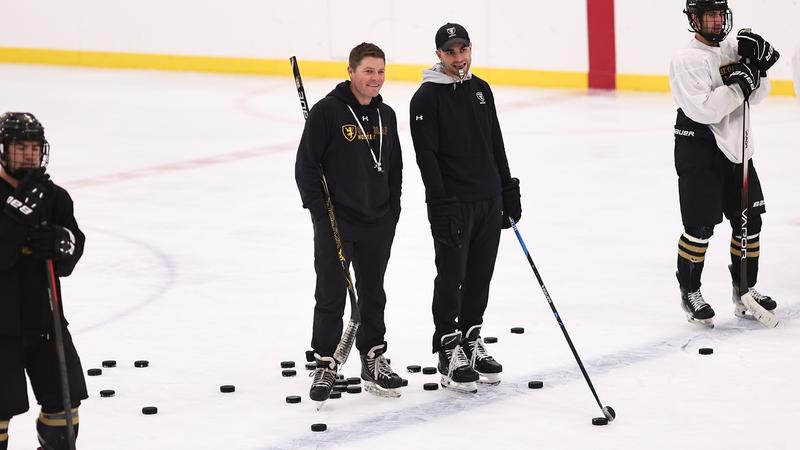
NORTHFIELD, Minn. – After five seasons as the head coach of the St. Olaf College men’s hockey program, Eddie Effinger has stepped down to accept another head coaching position and former assistant coach Tyler Lindstrom has been elevated to head coach, as announced by Director of Athletics, Kelly Mahlum on Friday.
After leading St. Olaf to the most successful stretch in program history, Effinger stepped down to accept the head coach position at Amherst College, his alma mater. Lindstrom, who has been Effinger’s top assistant coach for the last three seasons, was named Effinger’s successor heading into the 2025-26 season and is just the seventh head coach for the program since 1958-59.
“Eddie has made a lasting impact on the men’s hockey program during his time on the Hill,” Mahlum said. “He not only built a nationally-competitive program but also prioritized developing the people around him – his assistant coaches and student-athletes. I’m grateful for the opportunity to work with Eddie over the past five years and wish him and his family all the best in his next chapter.”
During his five seasons at St. Olaf, Effinger led the Oles to a record of 54-49-11 (.522) and four consecutive seasons with double-digit wins after his first season was reduced to two games due to the COVID-19 pandemic. He guided the program to Minnesota Intercollegiate Athletic Conference (MIAC) Playoff appearances in each of his four full seasons, including two of the program’s three MIAC Playoff titles in 2021-22 and 2023-24, which led to two of the three NCAA Tournament appearances in program history. Effinger’s .522 winning percentage is the highest in program history of any coach (minimum three seasons) and the program’s 53 wins over the last four seasons is the highest total for a four-year stretch in program history.
“St. Olaf College and St. Olaf Athletics have meant the world to my family and I,” Effinger said. “From our first day on the Hill, the St. Olaf community welcomed and embraced us. I will be forever grateful to the countless individuals that have supported me and our hockey program over the past five years. I want to thank President Susan Rundell Singer, Kelly Mahlum, and Ryan Bowles for the opportunity and their mentorship. Most importantly, I want to thank our current and former players for the impact they have had on the program and me personally.”
At St. Olaf, Effinger coached one two-time USCHO.com First Team West All-American, one two-time All-USCHO honoree, one USCHO All-Rookie selection, eight All-MIAC honorees, six MIAC All-Playoff Team choices, and the program’s first-ever MIAC Defensive Player of the Year. His teams also excelled academically producing 65 Academic All-MIAC honorees, 32 American Hockey Coaches Association (AHCA) All-American Scholars, 10 College Sports Communicators Academic All-District honorees, and one two-time MIAC Elite 22 Award recipient.
After joining Effinger’s staff prior to the 2022-23 season, Lindstrom has helped St. Olaf to a 42-33-8 (.554) record over the last three seasons, as well as three consecutive MIAC Playoff appearances. The Oles have advanced to the semifinals of the MIAC Playoffs in each of his three seasons, including the program’s third-ever MIAC Playoff title and NCAA Tournament appearance in 2023-24. St. Olaf was the runner-up in the MIAC Playoffs in 2024-25.
“I am incredibly excited and honored to be named the head coach of St. Olaf men’s hockey,” Lindstrom said. “I’d like to thank Kelly Mahlum for trusting me with this opportunity and look forward to leading our student-athletes in this new role. I truly believe that St. Olaf is the best place to play Division III hockey in the country. The program will continue to compete for championships while offering some of the best educational opportunities in the country. This place is special and will continue to provide elite experiences for our student-athletes.”
During his time at St. Olaf, the program has produced one two-time American Hockey Coaches Association First Team West All-American, one Sid Watson Award finalist (national player of the year), one MIAC Defensive Player of the Year, one two-time All-USCHO honoree, and one All-DIIIHockeyNews.com selection. St. Olaf has also had seven All-MIAC honorees and six MIAC All-Playoff Team selections in Lindstrom’s three seasons.
“I would like to thank Eddie for everything he has done for me personally and for the St. Olaf program as a whole,” Lindstrom added. “He is a tremendous person and leader who will be missed in our program and across campus. Eddie is also someone who I am fortunate to call a friend and mentor, and I can’t thank him enough for giving me my start in coaching three years ago. He has built the program into what it is today, and I am honored to continue to build on all of the success he has had.”
In addition to the on-ice success, St. Olaf’s program has excelled academically with 25 AHCA All-America Scholars, 38 Academic All-MIAC honorees, and 12 College Sports Communicators Academic All-District honorees during Lindstrom’s time on staff.
“I am pleased to announce Tyler Lindstrom as the new head coach of our men’s hockey program,” Mahlum said. “Tyler brings an exceptional work ethic, proven coaching expertise, and a strong track record in recruiting top-level talent. He understands and holds the values we carry in Ole Athletics, with a clear commitment to both academic and athletic excellence. I am confident he will have a positive impact on our student-athletes, and I am excited to see him continue the program’s upward success.”
Prior to his time on the Hill, Lindstrom played in 100 games over his five-year career at NCAA Division III Curry College in Milton, Mass. and, after graduating from Curry in 2021 with a bachelor of arts in business management, worked as a scout for the New England Wolves of the Eastern Hockey League (EHL). Lindstrom went on to earn his MBA in May 2022. Originally from Brooklyn Park, Minn., he played high school hockey at the Breck School. Lindstrom has also coached the U15/U18 teams for the Neponset Valley Rats, served as the program director for Base Elite, and worked as a skills coach for MN Lakers Hockey.
“I can think of no one better or more deserving than Coach Lindstrom to lead the program into the future,” Effinger added. “He is one of the hardest-working and most-talented individuals in college hockey, and the program is in great hands under his leadership. Most importantly, Tyler embodies the values of what it means to be part of the St. Olaf community. I am excited for Coach Lindstrom and the men’s hockey program.”
College Sports
Greg Cronin Named Iowa Wild Head Coach
SAINT PAUL, Minn. – Minnesota Wild President of Hockey Operations and General Manager Bill Guerin and Iowa Wild General Manager Matt Hendricks today announced the hiring of Greg Cronin as the Head Coach of the Iowa Wild, the team’s primary affiliate in the American Hockey League (AHL). “We are thrilled to have a coach of […]

SAINT PAUL, Minn. – Minnesota Wild President of Hockey Operations and General Manager Bill Guerin and Iowa Wild General Manager Matt Hendricks today announced the hiring of Greg Cronin as the Head Coach of the Iowa Wild, the team’s primary affiliate in the American Hockey League (AHL).
“We are thrilled to have a coach of Greg’s caliber behind the bench in Iowa,” said Hendricks. “He brings a thorough, detail-oriented approach and an extremely high understanding of the game of hockey. With an extensive background in player development and a proven track record of leading winning organizations, we are excited to bring Greg’s passion for coaching to our organization.”
Cronin, 62 (6/2/63), owns 38 years of coaching and player development experience, including 18 years of head coaching experience at the National Hockey League (NHL), AHL and NCAA levels. The Arlington, Mass., native most recently spent two seasons (2023-25) as Head Coach of the NHL’s Anaheim Ducks, where he compiled a 62-87-15 record (.424) in 164 games and guided the team to an 80-point season (35-37-10) in 2024-25, the franchise’s highest point total since the 2017-18 season. Prior to his time in Anaheim, Cronin spent five seasons (2018-23) as Head Coach of the AHL’s Colorado Eagles, leading the team to a 164-104-30 overall record (.601), four Calder Cup playoff appearances (2019, 2021-23) and a 34-18-4 record (.643) in the COVID-shortened 2019-20 season. In seven total seasons as an AHL head coach with Colorado and the Bridgeport Sound Tigers (2003-05), Cronin owns a 242-165-51 record (.584) across 458 games.
Before his time in Colorado, Cronin spent seven seasons as a coach at the NHL level, including four seasons with the New York Islanders, where he was Associate Coach in 2017-18 and an Assistant coach from 2014-17, and three seasons (2011-14) as an Assistant Coach with the Toronto Maple Leafs. Cronin spent six seasons as Head Coach of Northeastern University from 2005-11, earning Coach of the Year honors from Hockey East in 2009 after guiding the team to a 25-12-4 record and the school’s first NCAA tournament appearance in 15 years. Cronin spent seven seasons within the Islanders’ organization from 1998-2005, working as the team’s Director of Player Development from 2003-05, while also working as Head Coach (2003-05) and as an Assistant Coach (1998-03) for Bridgeport, the Islanders’ primary AHL affiliate. Cronin was an Assistant Coach at the University of Maine from 1988-90 and 1993-95 before serving as Interim Head Coach from December 1995 to December 1996. He was also an Assistant Coach at Colorado College from 1990-93.
A co-founder of the United States National Development Program (USNTDP), Cronin spent the inaugural season of the program as Director of Player Development in 1996-97 and served as Head Coach in 1997-98. He began his coaching career at Colby College, his alma mater, as an Assistant Coach in 1987-88. He earned a master’s degree in business at the University of Maine in 1990 while serving as a Graduate Assistant for the hockey program. Cronin has also served as an Assistant Coach for Team USA at three World Championships (1997, 2011 and 2012) and was an Assistant Coach at back-to-back World Junior Championships in 1997 and 1998, helping the U.S. to a silver medal in 1997.
Cronin played four seasons of collegiate hockey at Colby College from 1982-86, helping the team to ECAC Division II Final Four appearances in 1983 and 1984 and receiving the Most Improved Player Award in 1984 and the Coach’s Award in 1986.
Follow @mnwildPR on X and visit www.wild.com/pressbox and for the latest news and information from the team including press releases, game notes, player interviews and daily statistics.
College Sports
CBS to be main Pac-12 TV partner
It took a couple of years and the full dissolution of the conference, but the Pac-12 finally has a long-term media partner. CBS Sports and the Pac-12 have reached a multi-year media rights deal that will make CBS the primary broadcast partner for the conference from 2026 through the 2030-31 academic year, it was announced […]
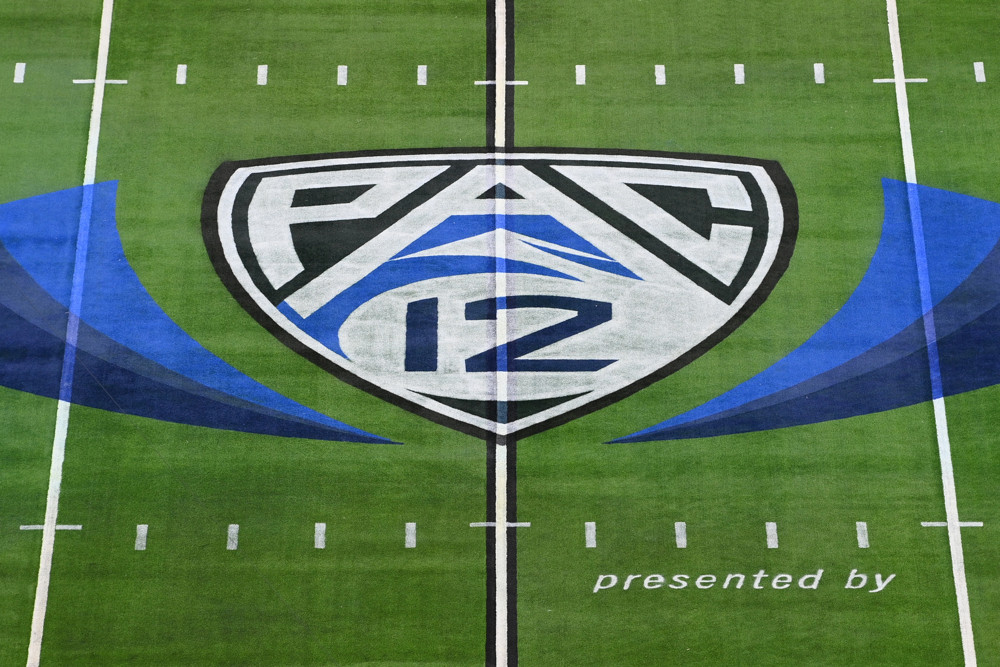
It took a couple of years and the full dissolution of the conference, but the Pac-12 finally has a long-term media partner.
CBS Sports and the Pac-12 have reached a multi-year media rights deal that will make CBS the primary broadcast partner for the conference from 2026 through the 2030-31 academic year, it was announced Monday. Under the deal, the main CBS broadcast network will carry at least three football and men’s basketball games per season, including the football and men’s basketball championship games.
Additional football and men’s basketball games will air on CBS Sports Network.
The new deal is technically an extension, as CBS in April struck a one-year deal to carry the current two-member Pac-12 this coming season. CBS is no stranger to the Pac-12, having carried the men’s basketball championship as recently as 2012.
While the Pac-12 currently consists of just Oregon State and Washington State, as of next season it will expand to eight programs — including seven in football. The conference will need to add one more football program in order to satisfy NCAA requirements.
The new Pac-12 schools include five from the Mountain West, Boise State, Colorado State, Fresno State, San Diego State and Utah State. CBS currently airs Mountain West football games, but that deal is set to expire after this season.
The Pac-12 is expected to announce additional partners at a later date. In addition to CBS, games this season will air on CW and FOX.
College Sports
Players to Watch
The 2025 ECNL Girls Playoffs are coming up June 26 – July 2 in San Diego, where the best teams in the nation will go head-to-head in high-states postseason action. Teams across the U13-U18/19 age groups were recently drawn into their respective postseason brackets, with the Champions League representing the top tier of competition. The […]
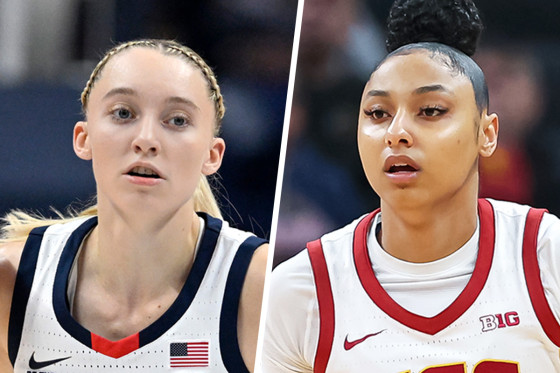
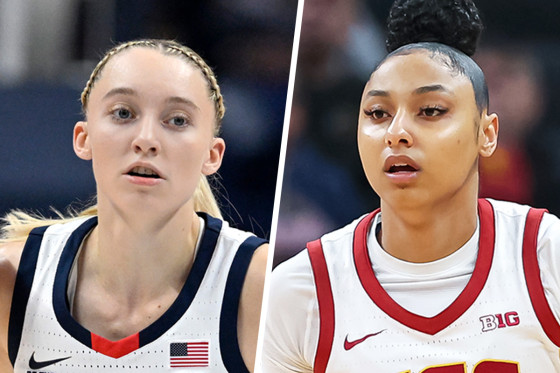
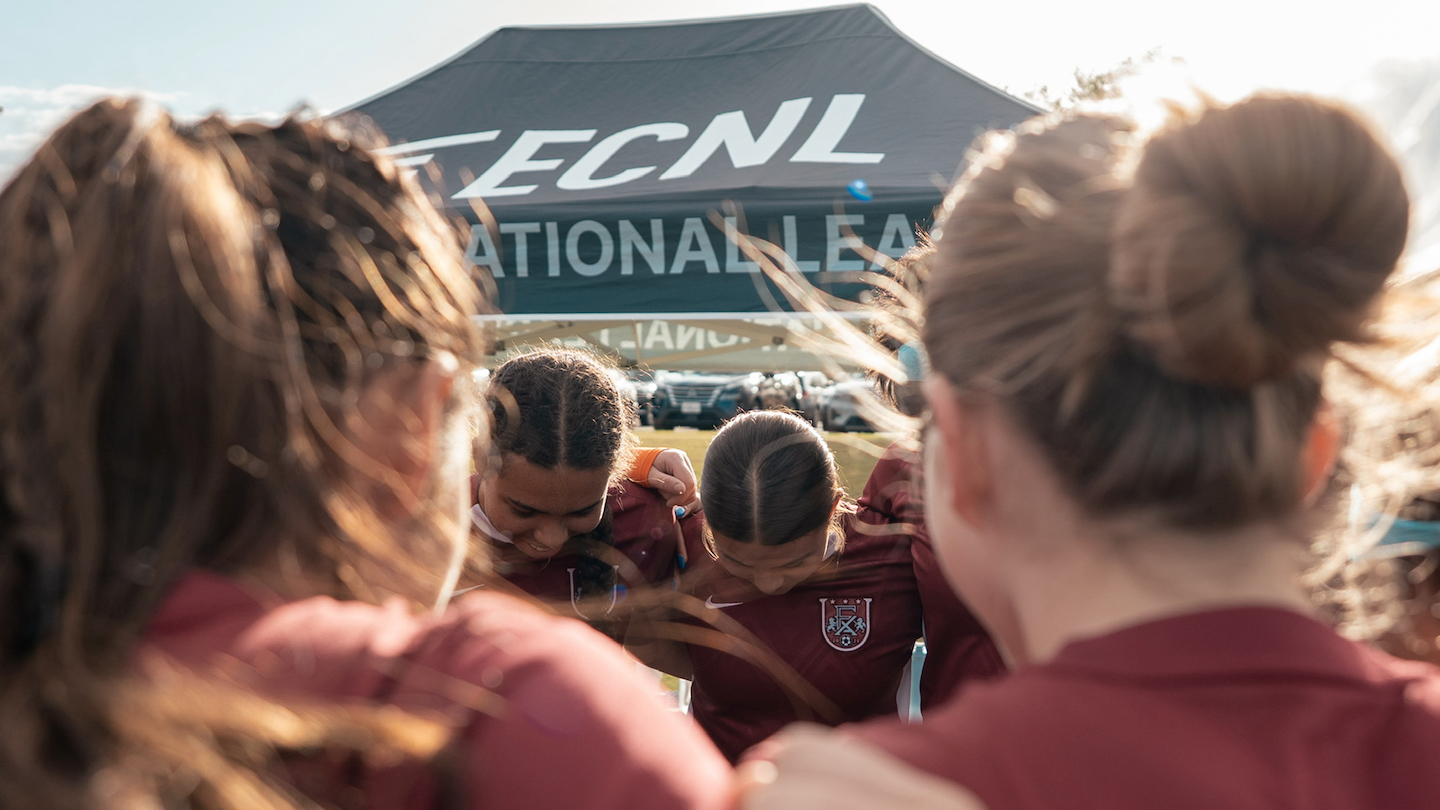
The 2025 ECNL Girls Playoffs are coming up June 26 – July 2 in San Diego, where the best teams in the nation will go head-to-head in high-states postseason action.
Teams across the U13-U18/19 age groups were recently drawn into their respective postseason brackets, with the Champions League representing the top tier of competition.
The U13-U14 age groups feature 44 teams that have qualified for the Champions League group stage, while the U15-U17 divisions each have 48 teams. In each division, only 8 teams will be left standing at the conclusion of the San Diego event.
The U13-U17 quarterfinalists will return to action during the ECNL Girls National Finals in Richmond, VA from July 18-21, where remaining National Champions will be decided. Meanwhile, the U18/19 age group will play the entirety of their postseason event at the ECNL Playoffs, with their National Champion being crowned in San Diego. The U18/19 Champions League division has a 16-team bracket with a single elimination format.
To see the list of registered college coaches for the ECNL’s postseason event, click here.
Ahead of the ECNL Girls Playoffs, here are some players to know. Players are listed according to their graduation year.
You can also nominate a player that will be attending the event. To nominate a player for consideration, CLICK HERE.
2030
Brooklyn Walker | Defender
Solar SC 2011 (TX)
This Class of 2030 defender will be a name to watch in the coming years, representing one of the nation’s best clubs in Solar SC. Walker and her teammates on the Solar SC 2011 back line limited opponents to just 10 goals over 15 games in a highly-competitive Texas Conference this season. Walker, who recently earned a spot on the U.S. U-14 Girls National ID Camp roster, will take on some tough opponents in Group of the U14 Champions League.
———————
Aubrey Taylor | Midfielder
San Diego Surf 2011 (CA)
Getting the opportunity to play on her home fields at Surf Sports Park, Taylor and her San Diego Surf 2011 squad have been drawn into an exciting Group D pod in the U14 Champions League. Taylor was called up for U.S. U-14 Girls National ID Camp last month, as she’s been in the midst of an absolutely dominant season in which San Diego Surf racked up 74 goals over 16 conference games.
2029
Ariana Rodriguez | Defender
Solar SC 2011 (TX)
The Solar SC 2011 back line projects to be one of the premier defensive units in the country for years to come, as they are loaded with top-level talent. Rodriguez and her teammates held opponents to 10 goals over 15 ECNL Texas Conference games, which is extraordinary considering the level of attacking talent that they faced on a weekly basis. The Class of 2029 defender is on the radar of U.S. Soccer, earning a call-up for the 2025 U.S. U-14 Girls National ID Camp.
———————
Anjali Nimmagadda | Forward / Midfielder
San Diego Surf 2011 (CA)
Nimmagadda is a dynamic attacking player for a prolific San Diego Surf 2011 offense which exploded for 74 goals in 16 ECNL Southwest Conference games. She’s a great scorer and a creative playmaker who makes decisive passes in the final third, and she has an impressive ability to beat multiple defenders at the same time, causing frustration even for well-prepared back lines.
2028
Lilah Helwig
Midfielder
Helwig has steadily evolved her game year-after-year, and she’s risen to national prominence as a member of the U.S. U-16 Girls National Team roster pool. The midfielder / forward will be representing FC DELCO 2009 in Group L of the U16 Champions League, which projects to be an evenly-matched and highly competitive pool of teams.
Kiyomi Yoshimura
Midfielder
This U.S. U-15 Girls National Team roster pool member spearheads an MVLA SC 2010 offense which is absolutely overwhelmed opposing defenses all season long, scoring a mind-blowing 112 goals in 18 ECNL Northern Cal Conference games. Yoshimura does it all in the attacking midfield, scoring goals and piling up assists in bunches for the No. 3 overall team in the 2010 Champions League.
Olivia Hasan
Goalkeeper
A top-rated goalkeeper who’s fresh off a call-up to the U.S. U-15 Girls National Team, Hasan is a reliable and steady presence between the posts for Eclipse Select 2010. Playing behind a solid back line, Hasan and her teammates allowed only 14 goals in 15 ECNL Midwest Conference games in the regular season, securing them a place in the U15 Champions League.
Vivian Baker
Goalkeeper
Vivian conceded only one goal during the Spring 2025 campaign, across ECNL Northern Cal Conference action and showcase play for MVLA 2010. She posted a save rate over 96% and accumulated 10 clean sheets in that span. Her strong communication from the back helps organize players in the field, and her physical tools and shot-stopping abilities are second-to-none.
Reed Tingley
Forward
Tingley helps lead a strong Concorde Fire 2009 attack. She is a dynamic and tenacious forward known for her clinical ability, who consistently finds the back of the net, including multiple hat tricks. Tingley combines aggression in the attack with strong off-ball movement, making her a constant threat in the final third. She’s a player with pace, finishing touch and confidence.
———————
Cassandra Travers | Defender
Bay Area Surf 2010 (CA)
A premier prospect from the Class 0f 2028, Travers is a U.S Youth National Team roster pool defender who can make contribute in a multitude of ways over the course of a game. Whether she’s cutting off opposing runs before they get anywhere near the 18, or creating quick scoring chances in transition, Travers is an elite level prospect who played a huge role in a 14-2-2 regular season for Bay Area Surf, which could be a dark horse title contender in the ECNL Champions League.
———————
Natalia Hanson | Midfielder / Defender
Penn Fusion 2010 (PA)
Another Class of 2028 prospect who’s been a rising member of the USYNT roster pool, Hanson is an absolute force both in the midfield and on the defensive side. She has a modern skillset which combines a wide combination of high-level traits, mixing elite level strength and toughness along with precise technical skills and creativity with the ball at her feet. Penn Fusion finished atop the highly-competitive North Atlantic Conference this season, outscoring opponent 31-7 while going undefeated and earning the No. 8 Champions League spot.
2027
Gianna Hanf
Forward
Midfielder
Match Fit Surf 2009 star Gianna Hanf has enjoyed a phenomenal 2024-25 season, which saw her completely take over games at some of the league’s biggest showcases. She did more than enough to catch the attention of the UNC Tar Heels staff, and she was among the first Class of 2027 prospects to verbally commit this month. Hanf and her teammates will aim to continue their success in Group J of the U16 Champions League.
Olivia Shaw
Forward
Shaw is a promising attacking player for SUSA FC 2009, which secured a berth in the ECNL Champions League after earning a third place finish in the New England Conference. Having just recently entered her recruiting window, Shaw has been sharp in ECNL National Events this season, including a dominant performance at ECNL Florida, where she racked up 5 goals and 3 assists over 3 games.
Makena Lee
Forward
A renowned playmaker for PDA Blue 2009, Lee and her teammates had yet another phenomenal season in the North Atlantic Conference, posting an unbeaten 8-0-2 record while securing the Champions League’s No. 7 overall seed. Lee is a game-breaking forward who has great chemistry with her PDA teammates, and has also dominated at the high school level with Baldwin School. (HIGHLIGHTS)
Taylor Morrell
Forward
This U.S. Women’s Youth National Team roster pool member has enjoyed another outstanding season both for club and country. She spent this season creating goals for the U.S. U-16 Girls National Team and leading a dominant VDA 2009 attack which racked up 37 goals in 11 ECNL Mid-Atlantic Conference games. VDA enters the ECNL Playoffs as the No. 5 overall seed after posting an unbeaten 9-0-2 record to win the Mid-Atlantic Conference.
Aubrey Malace
Defender
Malace is a high-impact, versatile defender who excels across the entire back line for Fairfax Virginia Union 2009 (competing in ECNL North American Cup), both as a center back and outside back. Known for her elite tactical awareness, she dependably shuts down top-tier attackers and anticipates plays before they develop. Her exceptional distribution (especially long-range passing) adds tremendous value in transition, as she reliably jumpstarts the attack from the back.
———————
Amari Manning | Forward
PDA Blue 2009 (NJ)
As PDA Blue 2009 aims to add a second ECNL National Championship to their trophy case, Manning enters the postseason in strong form once again, as she’s coming off another call-up to the U.S. U-16 Girls National Team. She’s one of the most intimidating players for opposing defenders to take on, since she possesses such a rare combination of speed, strength, technical skills and passing ability. (HIGHLIGHTS)
———————
Devon Bankers | Goalkeeper
Seattle United 2009 (WA)
A strong Class of 2027 goalkeeper who has earned spots on the USYS ODP National Team and the West Regional Team, Bankers has been a key player all season long for Seattle United. Bankers and her back line limited opponents to just 15 goals in 18 league games, earning a spot in the ECNL Champions League.
———————
Caylee Brown | Defender
Washington Premier 2008 (WA)
Brown helped lead a strong Washington Premier back line this season, as she contributed as a key two-way player. She was one of the top scorers for her team over the summer and ECNL regular season, as she has a an exceptional ability to move up and down the field all game long. She’s one of the most versatile players on the field for a Washington Premier 2008 side which will be competing in the ECNL Showcase Cup.
College Sports
Massapequa High School holds 70th graduation ceremony
Massapequa High School held its graduation ceremony at Hofstra University. Photo by Casey Fahrer Massapequa High School seniors threw their caps in the air as they celebrated the end of their academic careers within the district. Massapequa held its 70th graduation ceremony on Friday, June 20, at Hofstra University’s David S. Mack Sports & Exhibition […]

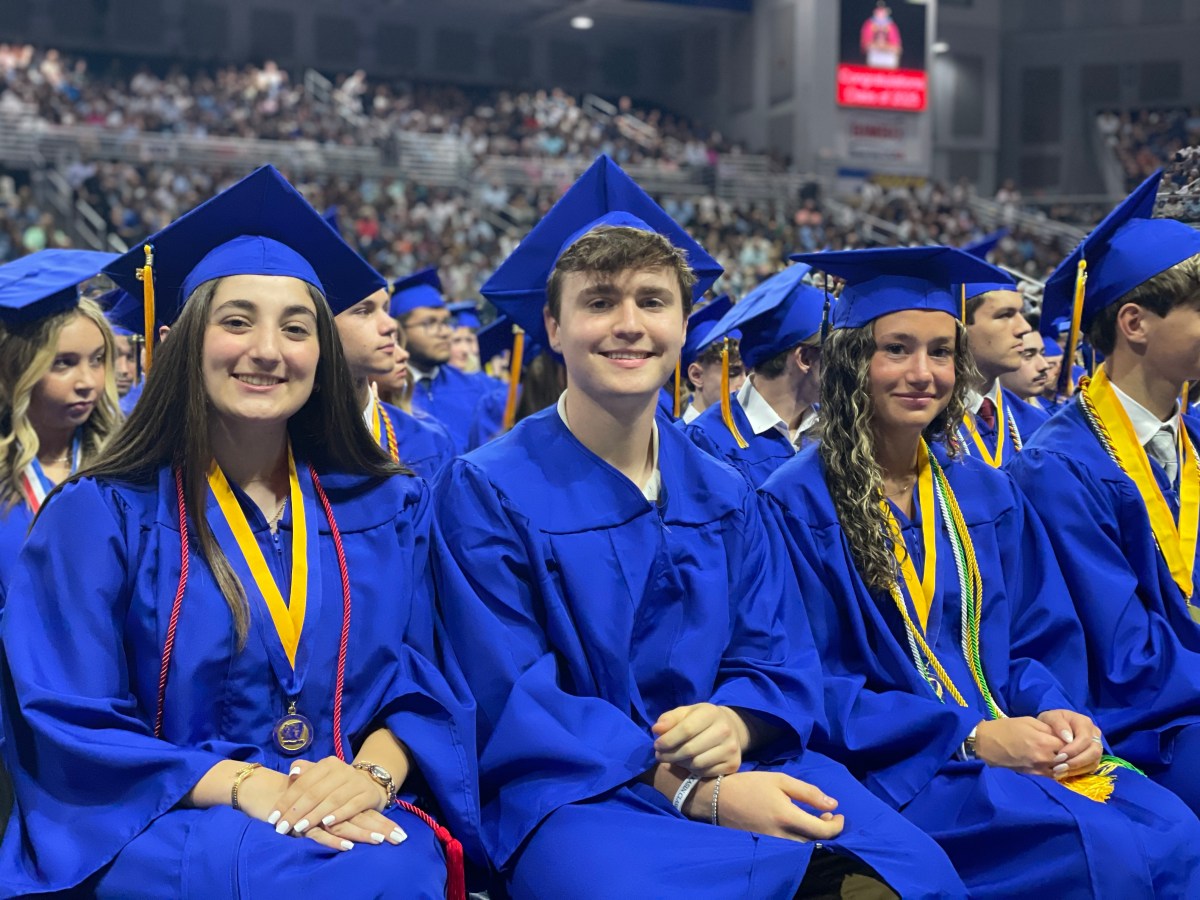
Massapequa High School held its graduation ceremony at Hofstra University.
Photo by Casey Fahrer
Massapequa High School seniors threw their caps in the air as they celebrated the end of their academic careers within the district.
Massapequa held its 70th graduation ceremony on Friday, June 20, at Hofstra University’s David S. Mack Sports & Exhibition Center. Over 450 seniors received their diplomas, something that Superintendent William Brennan called a big accomplishment.
“Today isn’t just a celebration, it’s a milestone,” he said.
Brennan opened up the ceremony by talking about the accomplishment, saying that education isn’t just about tests and grades. Massapequa High School Principal Barbara Lowell said the average GPA of seniors this year was above 90.
Lowell also said the graduating class received over $14 million combined in scholarship money for their future education. She highlighted the difference between the current seniors and the first set of seniors in the district in 1956.
“The world needs your light. It needs your compassion. It needs your creativity. It needs your courage,” Lowell told the 2025 class. “And no matter where life takes you, know that you will always have a home at Massapequa High School.”
Four students, Olivia Valaroso, Jackson Yahner, William Stebner and Samantha Portz, gave commencement speeches as well, all calling for the graduating seniors to show confidence, courage and passion with their future endeavors.
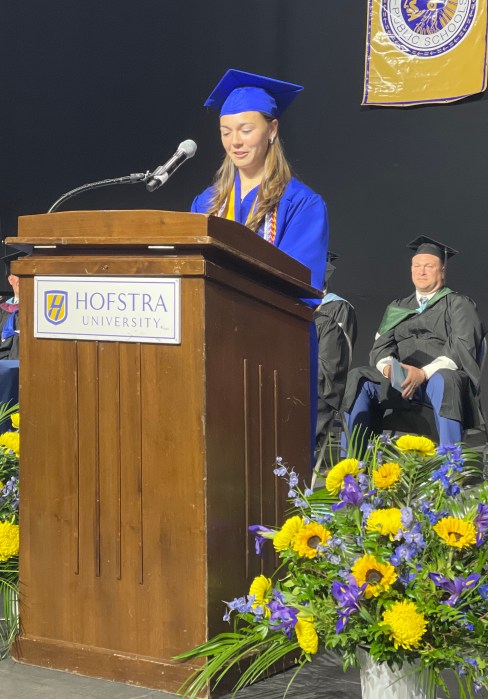
Multiple speakers also remembered Connor Kasin, a Massapequa senior who died while playing for the school’s varsity ice hockey team in November 2024.
Speakers also made sure to recognize the school’s mascot, as multiple people referred to the graduates as “Chiefs.”
“Chiefs lead, Chiefs give back, Chiefs serve,” Portz, the class’ valedictorian, said.
The district has been in a public legal battle with the state as Massapequa fights to keep its Native American name as the Chiefs.

College Sports
How revenue sharing should be distributed across the Big Ten Conference
For the likes of the Michigan Wolverines, the House vs. NCAA settlement was a small blip in the spending the athletic program already participates in every year, and it will be merely a percentage that must be allocated to athletes rather than other expenses. But that’s not the case for the entire country, let alone […]

For the likes of the Michigan Wolverines, the House vs. NCAA settlement was a small blip in the spending the athletic program already participates in every year, and it will be merely a percentage that must be allocated to athletes rather than other expenses.
But that’s not the case for the entire country, let alone the rest of the Big Ten. While Michigan and Ohio State bring in more than $160 million in athletic revenue every year, other Big Ten members such as Maryland, UCLA and Rutgers are much lower on the list, generating $81 million, $82 million and $72 million, respectively.
While these are still big numbers to the untrained eye, the Big Ten has been given direction to give $20.5 million to its athletes as part of direct revenue sharing during the 2025-26 academic year. While this is 10 percent of its revenue for Ohio State, it is 28 percent for Rutgers, according to NIL-NCAA. This could cause a massive disparity in salary caps, funds towards travel, training facilities expenses, staffing and many more costs that some programs just do not have the money for.
:no_upscale()/cdn.vox-cdn.com/uploads/chorus_asset/file/26031384/Screenshot_2025_06_18_at_3.43.11_PM.png)
Under the direction of House vs. NCAA, Division I programs are asked to follow a model that gives 75 percent of the $20.5 million to football (coming out to $15,375,000), 10 percent to men’s basketball ($2,050,000), five percent to women’s basketball ($1,025,000) and five percent to the school’s other varsity sports.
While this is a nice, overarching framework, that may not be practical in the grand scheme of things. If a program like Rutgers wants to be competitive for years to come, other strategies may need to be enlisted regarding the allocation of that money.
How revenue sharing should be distributed across the Big Ten
The Wolverines have 29 varsity sports that Warde Manuel is dedicated to keeping. The Buckeyes have 36, Maryland has 20, Northwestern has 19. As you can see, giving five percent to sports other than football and basketball can vary greatly between schools, and this is where strategy may come into play.
Take UCLA for example, a powerhouse in women’s gymnastics. Or USC, the national leader in beach volleyball. If programs want to compete for both Big Ten championships and national championships, putting money into these smaller programs could be where we see dynasties start forming.
While football has the big, flashy number now, things can change very quickly when programs start getting ahead of the competition.
Say in a year that athletic departments have more flexibility with their allocation of revenue sharing money. With scholarship limits already increased for the upcoming academic year, there is little-to-no oversight on how schools should be spending their money. Sure, if Michigan is spending $146,000 per year on each of their football players, it may be more difficult to compete with that by taking money away from other football programs.
However, realizing there are other ways of competing may be the first domino that needs to fall for schools to pivot and find their lane elsewhere. Here is a list of one sport outside of football and basketball that each Big Ten should prioritize going forward based on recent success (i.e. Big Ten championships and standings):
- Iowa – Wrestling
- Illinois – Men’s and Women’s Golf
- Indiana – Men’s Soccer
- Maryland – Men’s and Women’s Lacrosse
- Michigan – Ice Hockey
- Michigan State – Ice Hockey
- Minnesota – Ice Hockey
- Nebraska – Women’s Volleyball
- Northwestern – Field Hockey
- Ohio State – Women’s Volleyball
- Oregon – Baseball
- Penn State – Ice Hockey
- Purdue – Wrestling
- Rutgers – Rowing
- USC – Beach Volleyball
- UCLA – Women’s Gymnastics
- Washington – Men’s and Women’s Track and Field
- Wisconsin – Women’s Volleyball
This list displays a very unique situation in which school’s of different sizes, athletic program revenue and geographical location could potentially run a particular sport if they allocate the right amount of money to that sport.
When asked questions about other potential revenue pools, Ohio State athletic director Ross Bjork said, “We thought volleyball could be a sport that could drive more revenue.”
Similarly, Penn State athletic director Dr. Patrick Kraft said, “We’re trying to be able to manage the money so that if we need to move on someone, no matter what the sport is, we have the ability to say, ‘Hey, there’s the No. 1 fencer in the world, and we need to go use rev-share to maybe tilt it our way, we’re going to be able to do that.”
From golf to wrestling to lacrosse and every sport in between, we could see Big Ten schools separate themselves from one another, taking home Big Ten championships, the prize money and the publicity that would come with it.
How can the Big Ten leave their mark as a conference, and individually?
Revenue sharing is meant to create many benefits for programs. It increases the scholarships a school can give out, giving programs more flexibility with recruiting and roster spots. It should make athletes happier about their worth, and it gives coaches and staff another resource to use when recruiting and retaining athletes. And, in theory, it evens out the competition, allowing for schools to have the same resources as one another to compete for championships.
However, there are still going to be economic and resource disparities. It is how each school handles these inequalities which will be the true test of sustainability and continuous success.
-

 High School Sports3 weeks ago
High School Sports3 weeks agoParents Speak Out As Trans Pitcher Throws Shutout In MN State Quarterfinals
-

 Professional Sports3 weeks ago
Professional Sports3 weeks ago'I asked Anderson privately'… UFC legend retells secret sparring session between Jon Jones …
-

 Health3 weeks ago
Health3 weeks agoOregon track star wages legal battle against trans athlete policy after medal ceremony protest
-

 Professional Sports3 weeks ago
Professional Sports3 weeks agoUFC 316 star storms out of Media Day when asked about bitter feud with Rampage Jackson
-

 Motorsports1 week ago
Motorsports1 week agoNASCAR Weekend Preview: Autódromo Hermanos Rodríguez
-

 NIL3 weeks ago
NIL3 weeks agoPatrick Mahomes in OKC for WCWS, praises NiJaree Canady and Texas Tech
-

 College Sports3 weeks ago
College Sports3 weeks agoFull 2025 Women’s College World Series Finals Schedule
-

 NIL2 weeks ago
NIL2 weeks agoGreg Sankey fires jab at obstruction rule after controversial WCWS call in Texas vs. Texas Tech
-

 NIL3 weeks ago
NIL3 weeks agoTexas Tech Pitcher’s $1M Deal Proves What’s Possible For Women
-

 NIL3 weeks ago
NIL3 weeks agoReport































